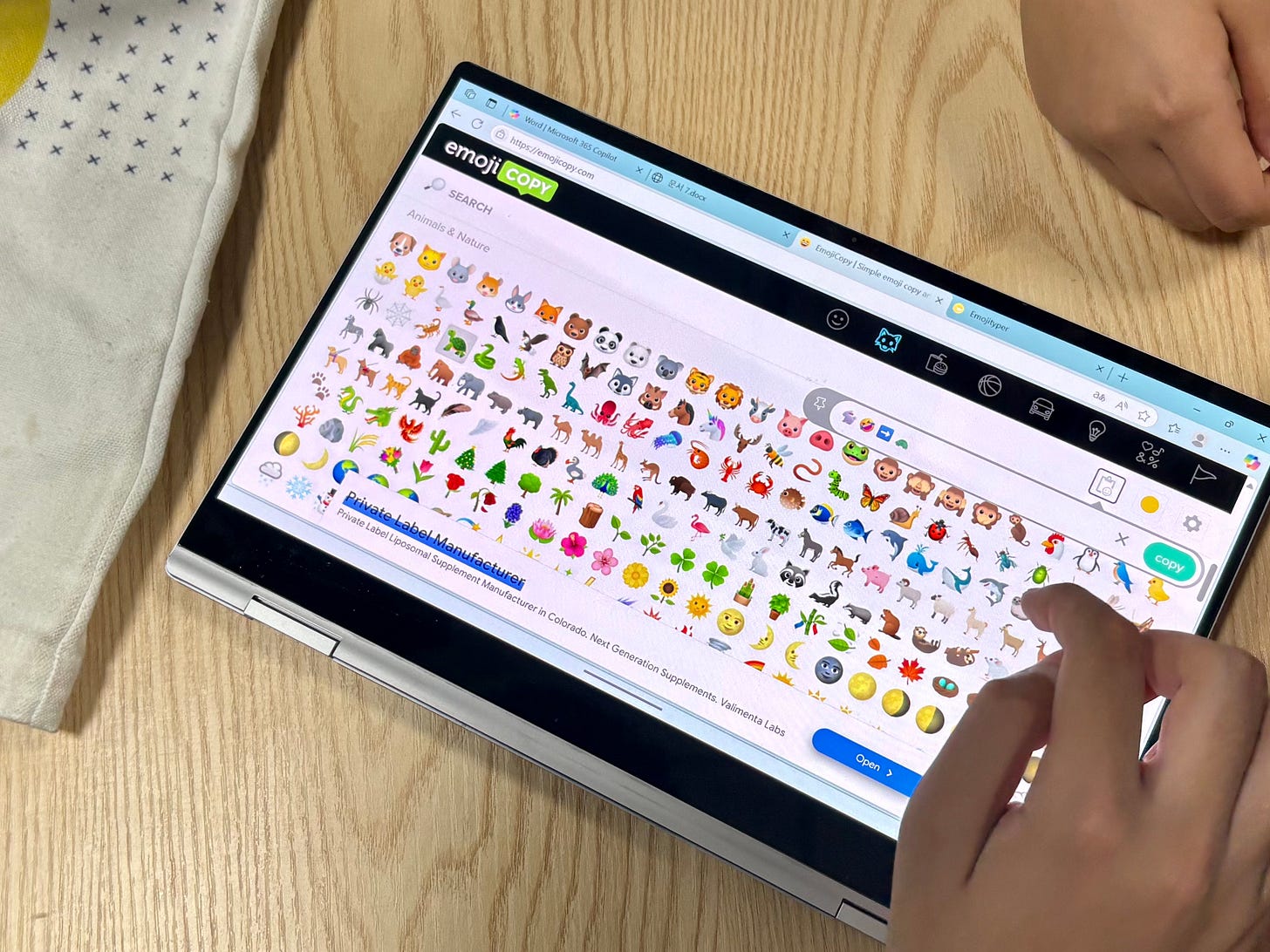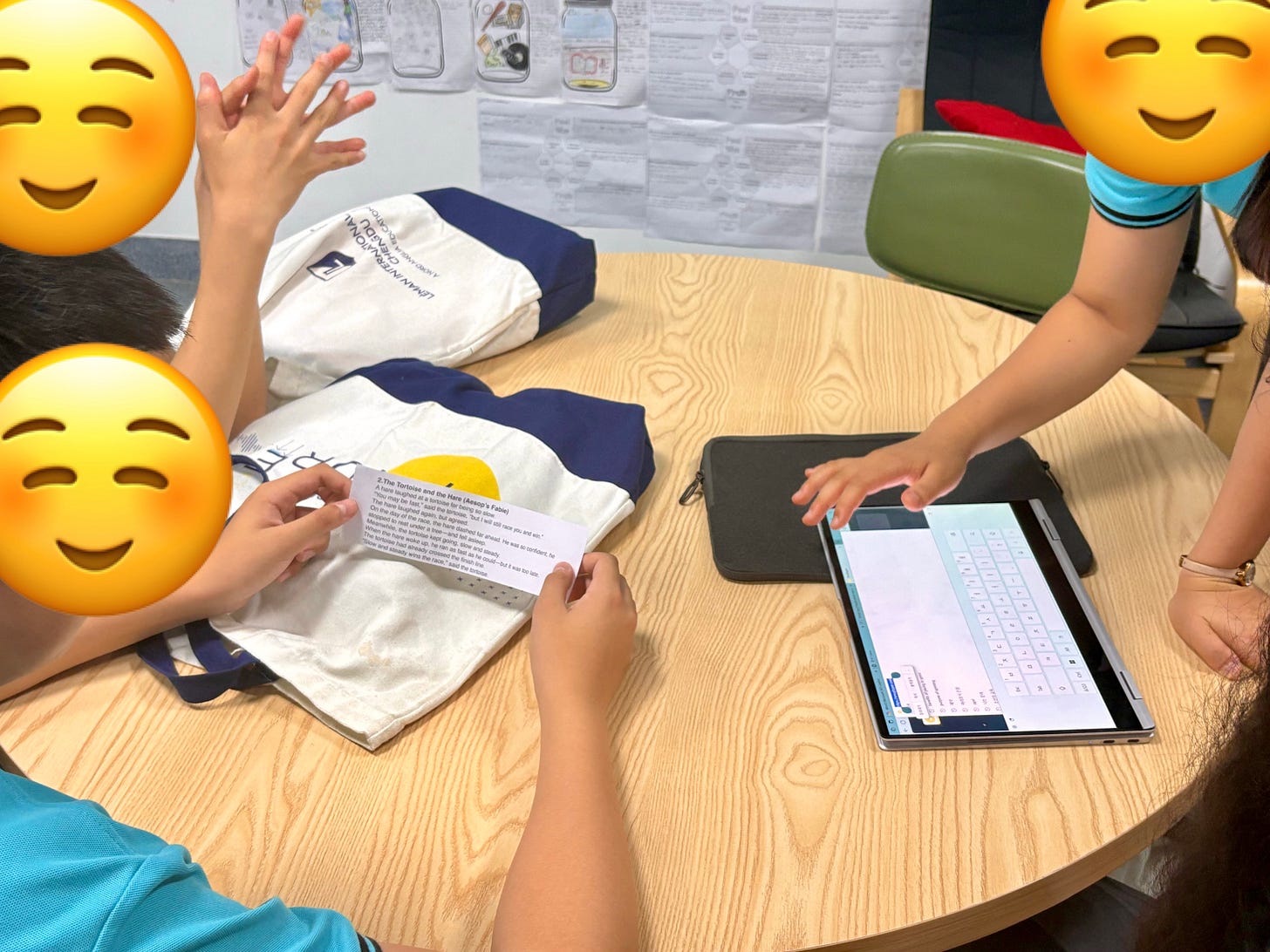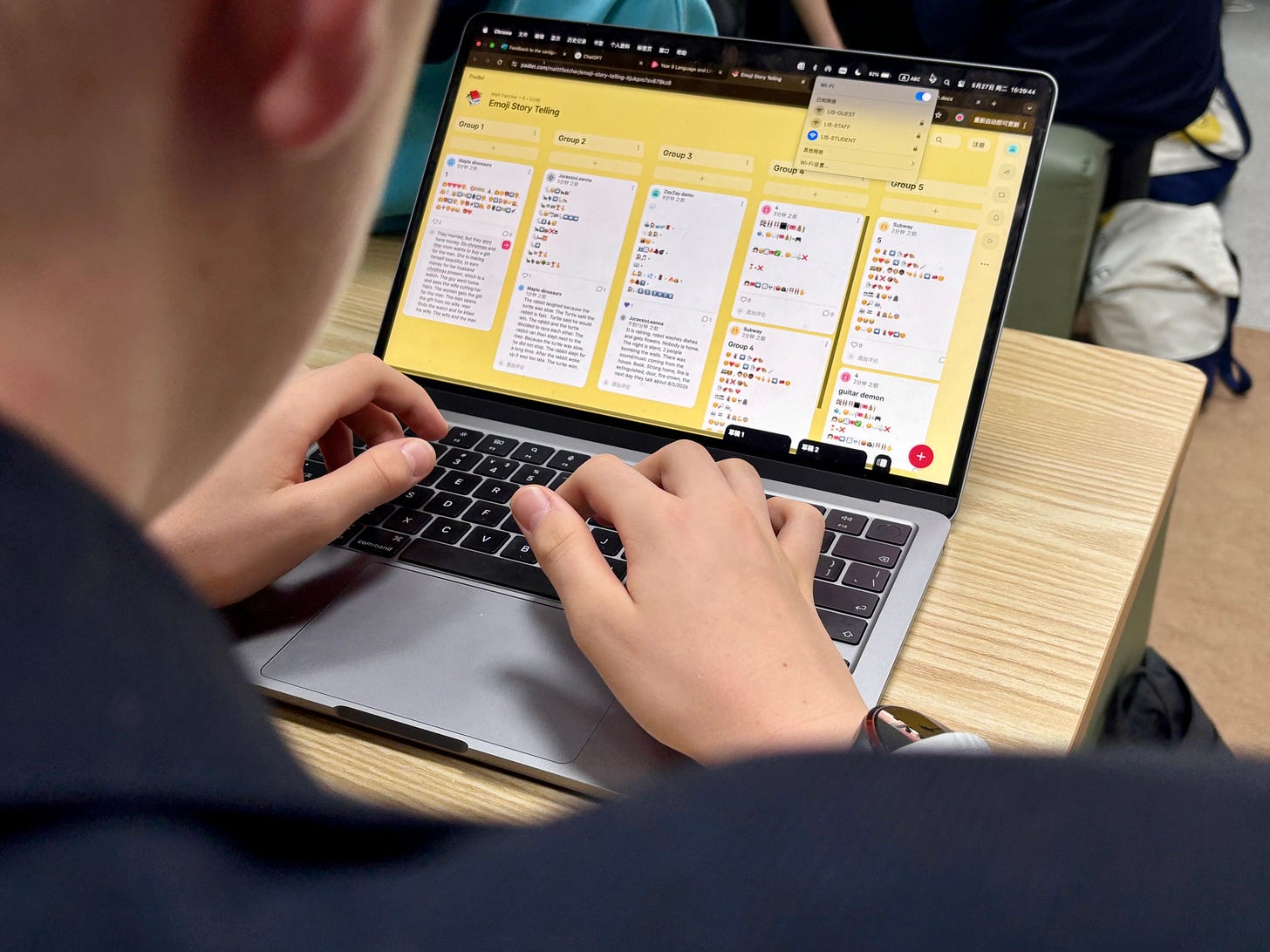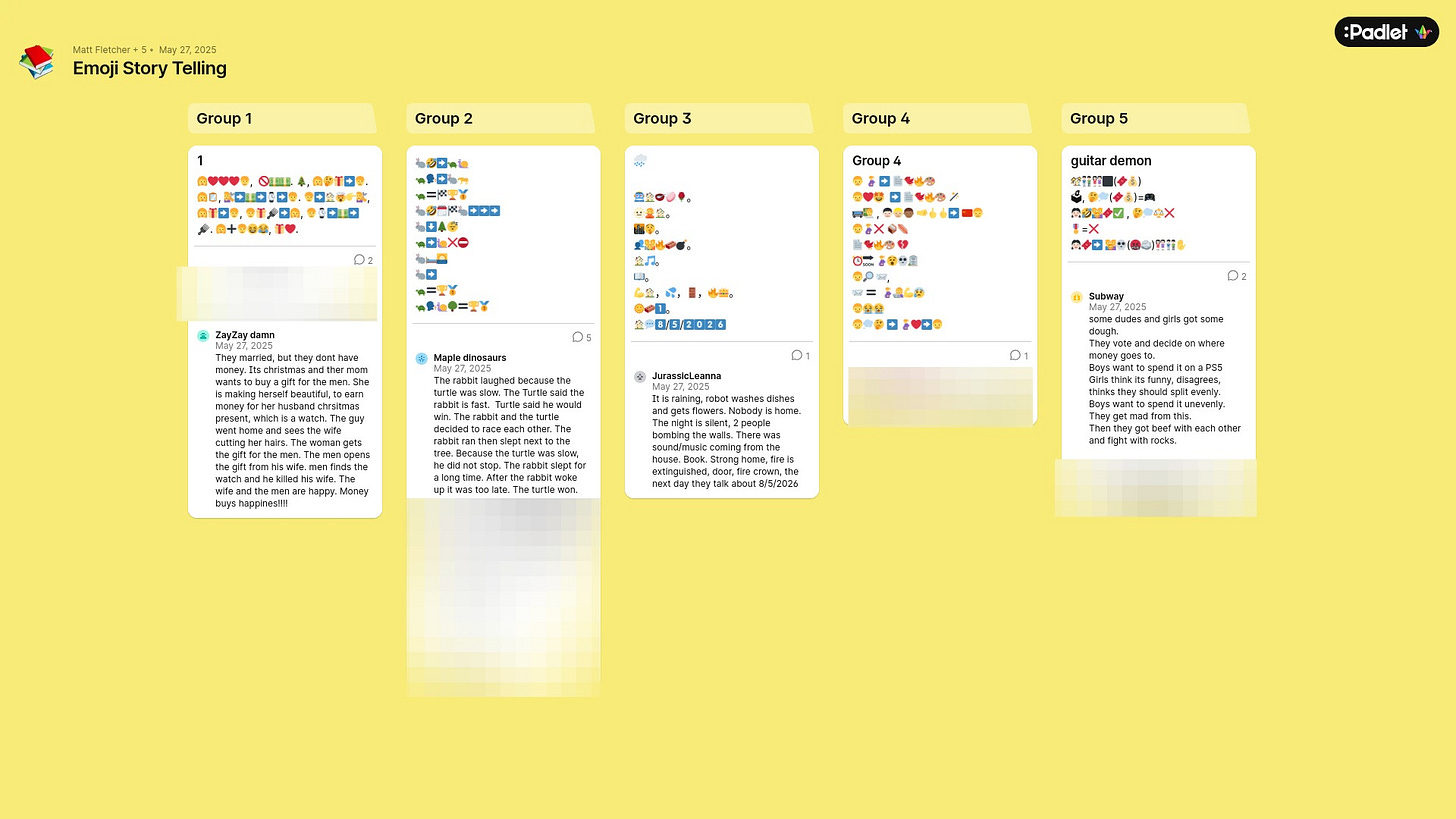Can You Emoji a Story?
Building ATL Skills in the MYP Classroom
As the school year winds down, my English language and literature students are deep in their free inquiry projects—a space where they take ownership of their learning, choose the questions they want to explore, and decide how best to communicate their findings. To support their inquiry, each week I spotlight one or two ATL skills and I design a fun, low-stakes learning experience that allows students to practice these skills in a focused way before applying them to their free inquiry projects. Most recently, we zoomed in on communication, and what better way to explore its nuances than through a playful but surprisingly powerful lesson: Emoji Storytelling.
Why This Lesson?
This activity wasn’t just about decoding smiley faces and pizza slices. It was about recognising that communication is layered, complex, and often richer when we combine different media. In the context of the ATL skill ‘use a variety of media to communicate with a range of audiences.’ I challenged students to retell a short story using only emojis—then reflect on the experience. To deepen their thinking, I asked questions like: What was the most difficult part of translating a story into emojis? What did your version communicate most clearly—and what might have been misunderstood? How did using visuals instead of words change the way you thought about tone, theme, or character? These questions encouraged students to think critically about their creative choices and consider how audience interpretation plays a vital role in effective communication.
This exercise reminded us as a class, that meaning isn’t only made with words. Images, symbols, structure, tone, and even silence all contribute to how we express understanding. By removing words and working within a shared visual language, students had to be both precise and imaginative in how they translated plot, character, and theme.
The Lesson in Action
We began with a warm-up Kahoot! quiz (link at the end of this article) centred around guessing famous book titles using only emojis. No instructions, no context—just a screen full of symbols. Titles like The Hunger Games (🍞🏹🔥), Harry Potter (⚡🧙♂️🏰), and Charlotte’s Web (🕷️🐖📖) appeared on screen, and students had to guess the book being referenced. This immediately sparked curiosity, laughter, and a flurry of whispered guesses. The absence of explanation was intentional, it provoked wonder, and subtly set the tone for the lesson to come: Can meaning really be made with symbols alone?
From there, students read a 100–250 word short story in pairs or small groups. Their task: summarise the key events, tone, and themes using only emojis. This wasn’t as straightforward as it seemed. Emojis are ambiguous, and consensus wasn’t always easy to reach. Was 💔 too obvious? Did 🌪️ convey both chaos and change? These discussions deepened their engagement and pushed them to think about the precision of language, visual or otherwise.
Instead of traditional presentations, we created a class Padlet. Each group posted their emoji story, and students (in groups) were invited to respond to other groups’ emoji sequences by guessing the story and explaining their interpretations. This approach offered multiple advantages: it gave all students a voice (especially those who are shy or still developing language skills), created an instant gallery of peer work, and shifted the focus from performance to interpretation.
The final phase was perhaps the richest: each group read the responses to their emoji sequence and discussed whether their intended meaning had been understood. If someone guessed incorrectly or misunderstood a key moment, groups debated why! Was it a confusing emoji? Was something vital missing? These moments of miscommunication were not failures; they were opportunities for reflective learning.
What Students Learned
In their reflections, many students were surprised by how much they assume when reading or writing. One group noted that using only emojis forced them to “get to the point” and strip away unnecessary details. Another group realised that what seemed obvious to them was interpreted completely differently by others. This sparked rich discussions about audience awareness, intended meaning, and the importance of clarity when using visual or symbolic forms of communication.
To close the loop, we used a few key reflection questions:
What did you learn about communication today?
Was anything lost—or gained—by translating the story into emoji?
How else could you use different forms of media to communicate your ideas more clearly?
The biggest takeaway? Multimodal communication isn’t a distraction from academic rigour, it’s a bridge to deeper understanding. In an inquiry-driven classroom, where students synthesise knowledge across disciplines, the ability to communicate clearly, creatively, and thoughtfully is essential. When students experiment with new modes of expression—whether it’s visuals, data, movement, or sound—they begin to see their learning in new ways and consider how best to share that learning with others.
💬 Final Thoughts
As educators, we’re always looking for ways to help students see their own thinking. Emoji storytelling did just that. It also created space for laughter, curiosity, and connection, things we all need more of, especially at the end of a busy academic year.
If you’re guiding students through inquiry, consider building in space to pause and practise specific ATL skills in playful, purposeful ways. These short, focused experiences offer students the tools they need to express their learning with depth and creativity.
Which ATL skill are you focusing on with your students this week? I’d love to hear what you're trying in your classroom.
Free Resources
Download the simplified lesson plan here
Access to the kahoot warmer activity (also in the simplified lesson plan)
Support and Stay Connected
Although I create and share these resources freely, there are ways to support if you find value in them:
👉 Take out a paid subscription on Substack to support future work
🤝 Share this post with colleagues and teaching communities
📲 Tag me on Instagram @fletchucation or visit mtfletcher.com
🗣️ Let me know how you’re using it in your classroom—I’d love to hear from you






